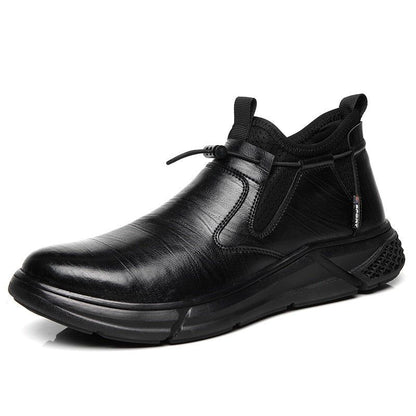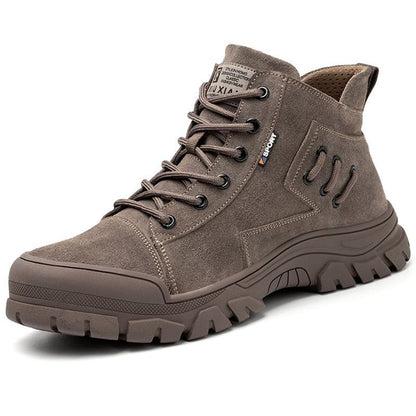
Safety footwear constitutes a vital component of personal protective equipment (PPE) for employees across diverse industries. Its primary role is to safeguard the feet against various potential dangers, encompassing falling objects, sharp objects, electrical perils, and extreme temperature conditions.
Many types of safety footwear are available, each designed to protect against specific hazards. Here is a brief overview of the most common types of safety footwear:
Types of safety footwear
- Steel-toe safety boots: Steel-toe boots are the most common type of safety footwear. They have a steel cap over the toe to protect against impact from falling objects.
- Composite toe safety boots: Composite toe boots have a toe cap made from a non-metallic material, such as Kevlar or carbon fiber. Composite toe boots are lighter and more breathable than steel boots but provide excellent impact protection.
- Safety shoes: Safety shoes are similar to safety boots but do not have a toe cap. Safety shoes are a good option for workers who do not need extra toe cap protection but still need to protect their feet from other hazards.
- Waterproof safety boots: The purpose of waterproof safety boots is to ensure dryness in damp environments. These boots typically feature a waterproof membrane lining and sealed seams to achieve this.
- Electric hazard (EH) safety boots: EH (Electrical Hazard) safety boots are specifically engineered to shield workers against electrical risks. They feature an insulating sole and heel designed to prevent the transmission of electrical currents through the wearer's body.
- Metatarsal protection safety boots: Metatarsal protection safety boots have a guard over the metatarsal bones, the long bones on the top of the foot. Metatarsal protection boots are a good option for workers at risk of crushing injuries to their feet.

- Puncture-resistant safety boots: Puncture-resistant safety boots have a sole designed to resist punctures from sharp objects, such as nails and screws. Puncture-resistant boots are a good option for workers working in construction or other industries with a risk of foot punctures.
- Insulated safety boots: Insulated safety boots are designed to keep the feet warm in cold conditions. They are often made with a layer of insulation and have a waterproof membrane lining.
Choosing the proper safety footwear
When choosing safety footwear, you must consider the hazards you will be exposed to on the job. Consider the type of work you will be doing and the comfort of the footwear.
Here are some tips for choosing the proper safety footwear:
- Identify the hazards: What specific hazards will you be exposed to on the job? Do you need protection from falling objects, sharp objects, electrical hazards, or extreme temperatures?
- Consider the type of work: What will you be doing? If you will be on your feet all day, you will need comfortable footwear. If you work in wet conditions, you will need waterproof footwear.
- Try on the footwear: Before buying safety footwear, try it to ensure it fits well and is comfortable. You should be able to wiggle your toes and have enough room in the footwear to move your feet freely.
Conclusion
Within numerous industries, safety footwear is a vital component of personal protective equipment (PPE), offering protection against a spectrum of potential hazards such as falling objects, sharp items, electrical dangers, and extreme temperatures, safeguarding workers' feet.
When choosing safety footwear, it is essential to consider the specific hazards you will be exposed to on the job, the type of work you will be doing, and the comfort of the footwear.










